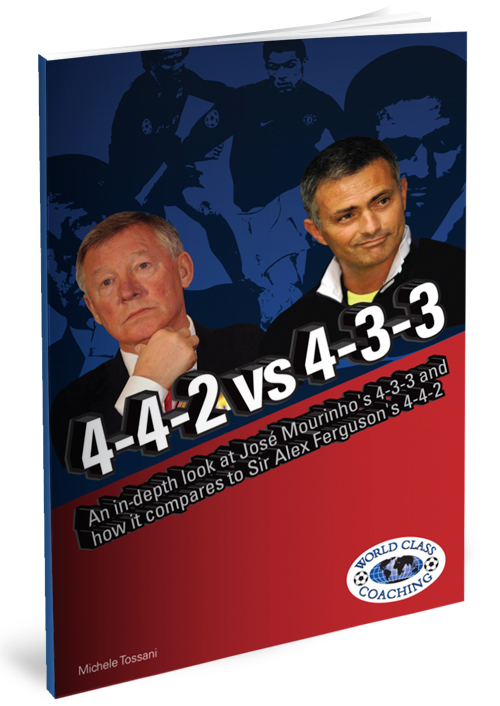Description
This book is organized into chapters that focus on the playing styles of Chelsea and Manchester United individually before pulling them together into a concluding chapter at the end. Through extensive detailed diagrams and clear explanations, 4-4-2 vs 4-3-3 provides a methodical analysis of these two great English Premier League sides.
José Mourinho’s 4-3-3 – This chapter starts by looking at the advantages and disadvantages of playing 4-3-3, which is arguably one of the most popular formations in the top divisions of European soccer. It then examines how Mourinho’s Chelsea formation differed from a typical 4-3-3 and how it was effective against the 4-4-2 formation adopted by many Premier League sides. In particular, it discusses how you can use the superiority of a packed central midfield and how the greater numbers upfront can spread the defense, creating opportunities of your forwards.
Sir Alex Ferguson’s 4 – 4 – 2 – The book’s title is a little disingenuous because Alex Ferguson has been known to switch to a 4-2-3-1 or 4-4-1-1 depending on the circumstances. This chapter analyses how Ferguson’s formation utilized wings in the offence, the combinations between forwards and the use of fullbacks for quick counter attacks.
In addition, this chapter assesses the special attributes of the 1999 team’s midfield of Roy Keane, Paul Scholes, Ryan Giggs and David Beckham, and then how the team was adapted to accommodate the talents of Christiano Ronaldo, Wayne Rooney and Carlos Tevez.
Mourinho’s Key Chelsea Players – This section assesses the characteristics of key players under Mourinho’s reign at Chelsea and how they were utilized. This includes Petr Cech, Frank Lampard, John Terry and Didier Drogba.
Ferguson’s Key Manchester Utd Players – Manchester United has never struggled to attract the world’s best players, and Ferguson has proven to be adept at combining big name signings with high quality home grown talent. Illustrious names on his team sheet over the years have included Edwin Van der Sar, Jaap Stam and David Beckham.
What We Can Learn From Mourinho and Ferguson – In his closing chapter, author Michele Tossani summarizes what coaches can learn from these two great managers, along with their tactical similarities and differences. How did each utilize the holding midfielder and what were their differing attitudes to wingers? Both these questions and many more are answered in this unique book.


